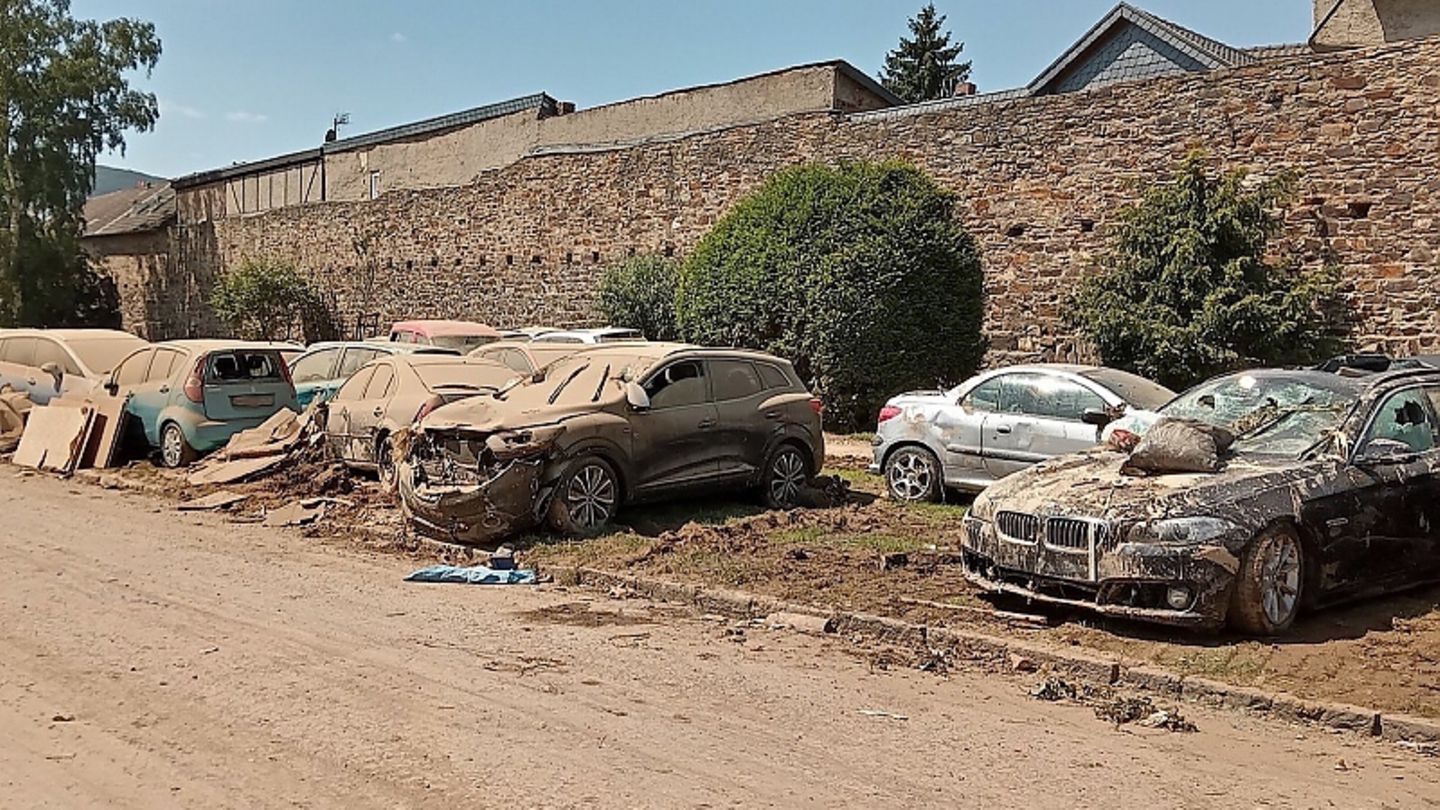The tidal wave in the Ahr valley and elsewhere not only washed away houses and entire livelihoods. They also left thousands of more or less demolished cars. What is happening to it?
The good news first: Most flood damage to cars is covered by partial or fully comprehensive insurance. The rough rule: when the water gets to the car, the insurance pays; when the car comes to the water, she doesn’t pay. So if you drive through a flooded underpass and stay where you are, you will get empty. Likewise, who only has liability insurance.
The insurers have already calculated: “According to an updated damage estimate, around 40,000 vehicles were damaged or destroyed by the floods,” says Jörg Asmussen, Managing Director of the German Insurance Association (GDV): “The insured damage for the motor vehicle insurer is included around 200 million euros. ” This means that the share of motor vehicle damage in the total preliminary damage balance is relatively low. The GDV assumes a total of 4.5 to 5.5 billion euros. In any case, according to GDV, the motor insurers got off lightly in the flood damage. The hail a few weeks earlier caused around 275,000 property damage to motor vehicles in Germany, which, according to previous estimates, will cost insurers around 700 million euros.
When the flood rolled through the river valleys in Rhineland-Palatinate, North Rhine-Westphalia, Bavaria and Saxony in mid-July, it swept vehicles with it en masse, washed them like flotsam into washed-out houses, destroyed streets and muddy gardens. How great the environmental damage will be cannot yet be foreseen: Oil and gasoline from leaking cars have polluted meadows, fields and squares. The wrecked cars themselves are currently being picked up by towing companies and taken to huge storage areas that are already bursting at the seams. From there, they should later be distributed to various scrapyards. Nevertheless, there is a good chance that owners can at least find their car again and report it to their insurance company as damage. The authorities have started to set up search databases with daily updated data. For example, vehicle owners can use a new portal from the Ahrweiler district administration to find out which towing service has recovered and transported their vehicle. All you need to search is the license plate number. The link: http://bit.ly/3eWBSM5
Most of the vehicles are likely to be total write-offs. The ADAC assumes three scenarios that also apply to electric cars. Even if the water has stayed below the door sill and the interior is dry, damage cannot be ruled out. “We recommend having all functional components in the floor area of the car checked,” says Peter Bredol from ADAC.
If the water reached over the door sill or even penetrated the interior, damage is very likely, according to ADAC. “Then the vehicle should not be started in order to avoid consequential damage. It should be pushed to the nearest dry place or towed away,” advises Bredol. All components that have come into contact with water should be checked. Safety-relevant parts such as belt tensioners or the automatic belt retractors should be replaced. Floor coverings, insulating mats or door and side panels should also be replaced, since dirt and moisture can hardly be removed in any other way.
If the water in the car was up to the lower edge of the window pane, there would be little to save, the car would be an economic total loss. Most likely, all electrical and electronic components, including the cable harnesses, were then damaged, and the water sloshed all the way to the engine and transmission. The electronics behind the dashboard are also likely to be destroyed. In addition, steering gears, service and parking brakes, drive shafts, wheel bearings, alternators, starters, textiles such as seats and insulating mats, seat belt tensioners, catalytic converters and airbags are particularly at risk. If you have at least partial comprehensive insurance, you should take photos of your car, including details, and report the damage to your insurance company. Experience has shown that insurers react quickly and unbureaucratically to such major loss events.
If you only have liability insurance, you only have to sell the vehicle. It is doubtful whether a repair is worthwhile. “Massive malfunctions” are always to be expected, says the ADAC. In the meantime, a real market for cars from the flood areas has emerged. There are more and more search ads on eBay for “flood cars” and sites like “wirkaufendeinauto.de” are specifically looking for it. If you want to sell your car with water damage, it is usually difficult to find a buyer. For the Internet platform, according to its own statement, no problem: “No matter how bad the damage is – we will examine your car!” Anyone who sells a flood car must expressly point this out to the buyer, as with an accident vehicle.
However, the trade in flood cars is not limited to Germany. After Hurricane Katrina in August 2005, thousands of cars damaged by salt water and mud were sold to Bolivia, for example, and thus contributed to the globalization of the auto recycling industry. According to a UN study, around 14 million used cars and vans were exported worldwide between 2015 and 2018. Most went to countries with low or middle average incomes. More than half emigrated to Africa, especially Nigeria, Benin and Gambia. Accordingly, numerous repaired total losses from the flood areas in Africa are likely to be on the way soon.
I am a 24-year-old writer and journalist who has been working in the news industry for the past two years. I write primarily about market news, so if you’re looking for insights into what’s going on in the stock market or economic indicators, you’ve come to the right place. I also dabble in writing articles on lifestyle trends and pop culture news.




